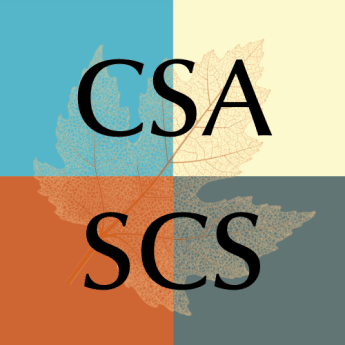Education Law & Policy
The Canadian Association of Sociology of Education (CASE) and the Canadian Sociological Association (CSA) Sociology of Education Research Cluster invite you to enjoy this webinar.
Presentation #1: The effects of parental and societal demands on the provincial government to enact compulsory education laws in Manitoba
Dr. Ardith McGeown Plant, The University of Winnipeg
The evolution of public education in Canadian society has been marked by changing social, political, economic, and parental demands forcing episodic changes in the Canadian educational system. For example, in Manitoba, the historical importance of the establishment of compulsory school attendance for students, ages 7 to 14 mirrored the shift in Canadian society at that time to prioritize public education. The findings of a recent dissertation (McGeown Plant, 2017) concluded that within the historical development of compulsory school laws, both parents and the public were the main instigators to the development of compulsory school laws in Manitoba. As noted in the literature (Henley & Young, 2008; Osborne, 2008), the concepts of public schooling and public education are now entrenched within Canadian society. The dissertation’s findings offered additional insights, in particular noting that the laws were not endogenous, but a follow-up analysis highlighted the importance of unintended consequences of mandatory school attendance laws for students. These unintended consequences included the importance of a student’s sense of belonging, a shift to restorative justice practices, and a renewed focus on student attendance. Thus, the corollary effects of an education statute had broader implications for students than the initial impetus from both parents and the public who demanded the government to enact compulsory school laws for their children and for the betterment of society.
Presentation #2: Postal code education: Schools, household income and student success
Dr. Paul Bennett, Director, Schoolhouse Institute and Adjunct Professor of Education, Saint Mary’s University
Where you live, it is often said, greatly influences the educational outcomes of your children. “The quality of education,” it is widely believed, ”is determined by your postal code.” In school systems with strict student attendance zones, it is, for all intents and purposes, the iron law of public education. No child’s future should be determined by their postal code, but the weight of research confirms that it does contribute to inequality in student achievement. Comparing and ranking schools on the basis of student test scores is a controversial practice, but it remains one of the few ways we can assess how our school systems are actually performing. While critics of school rankings (Raptis, 2012 ; People for Education, 2013) decry the practice, defenders of comparing schools contend that education is a public service and parents have a right to know how their students and schools are performing (Cowley, 2016). Mapping the school results against household family income helps us to see how schools rank in relation to socio-economic factors (Alphonso and Grant 2013). Such information is not only quick and easy to understand, but very helpful in ensuring that parents are better informed and more effective advocates for school improvement (Van Pelt, 2016).
A recent study of student performance and household income in Atlantic Canada’s largest school system tackles how where you live is a contributor to educational inequalities. The Halifax Regional Centre for Education (formerly the Halifax Regional Board of Education) provided a useful lens through which to tackle the whole question. Student achievement and attainment results over a recent decade, from 2008-09 to 2015-16, had been published in school-by school community reports and, when aggregated, provided clear evidence of how students were actually performing, school-by-school, in Halifax Region. The study also demonstrated how a regional school improvement project, initially focused on raising student achievement levels in lower socioeconomic schools fell short of its objectives, then evolved from 2009-10 to 2017-18 into one addressing differences along ethno-racial lines. It all raises critical questions, yields some startling results, and suggests the need for further research utilizing larger student populations.
